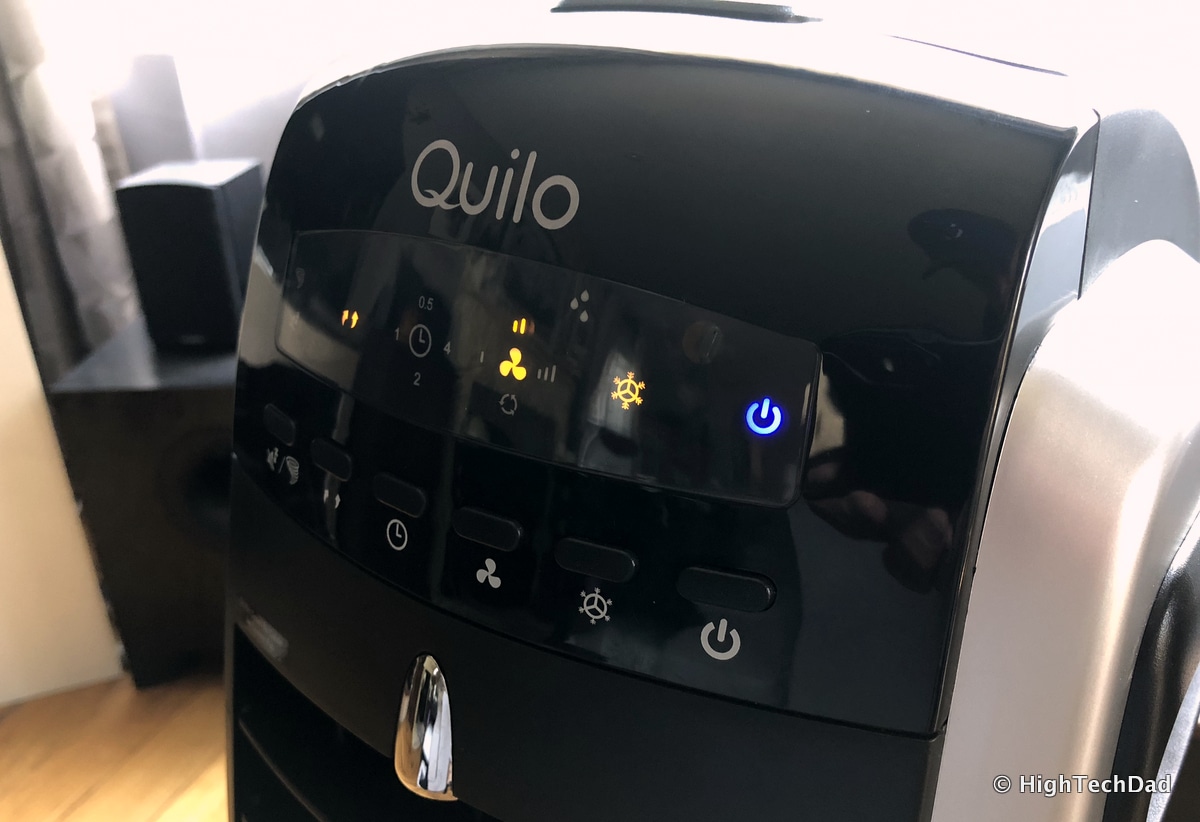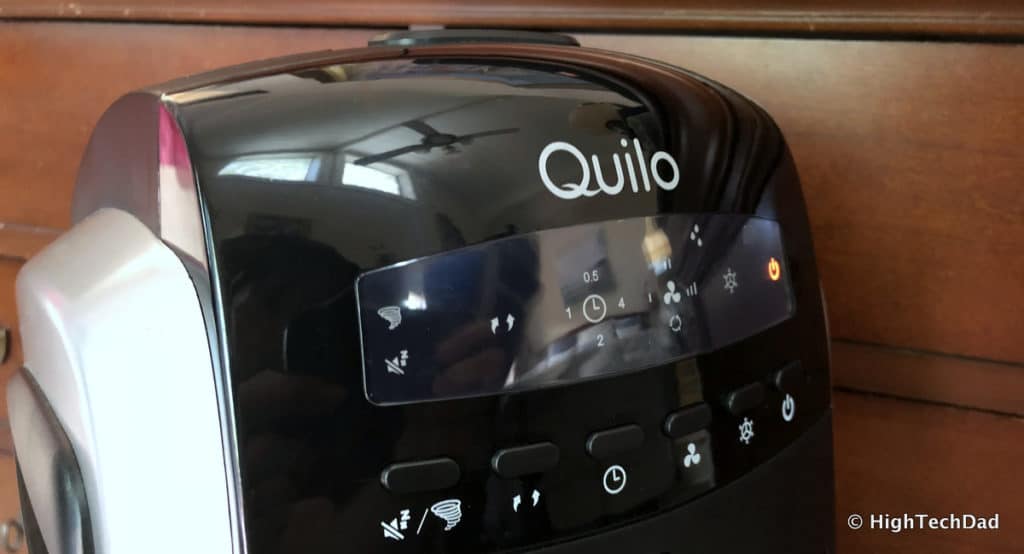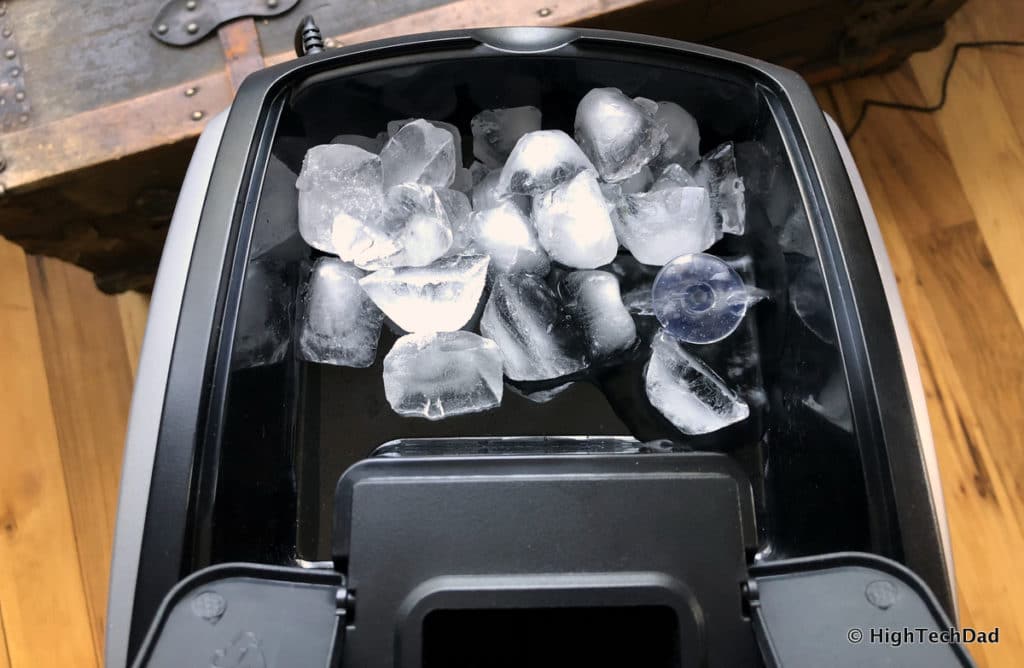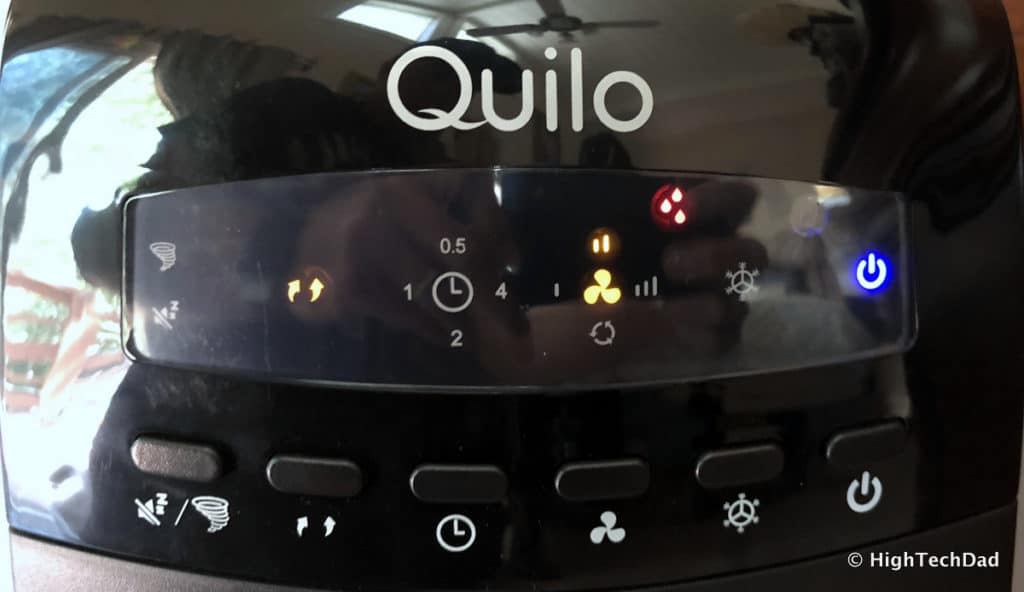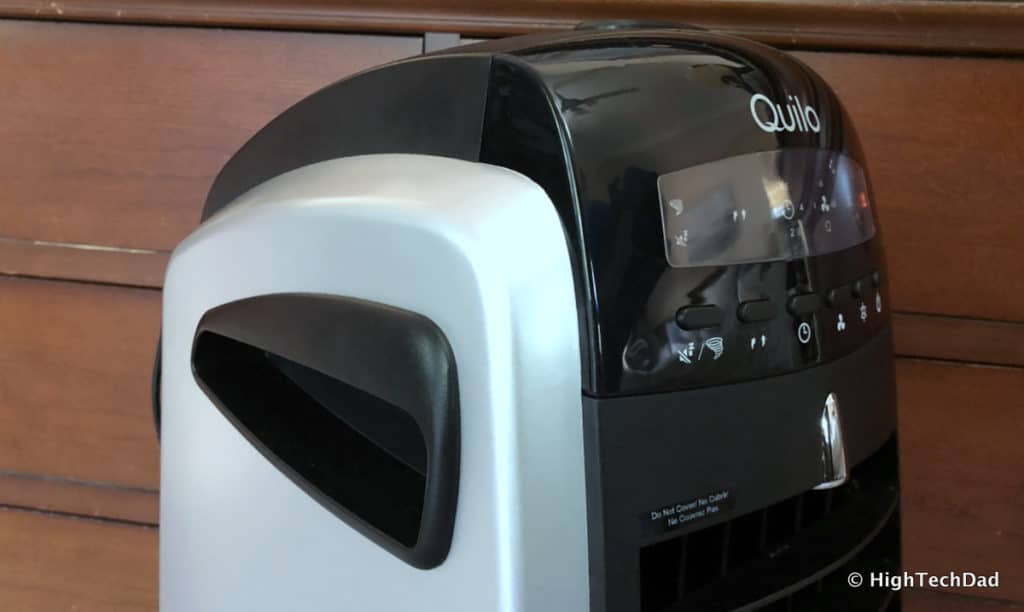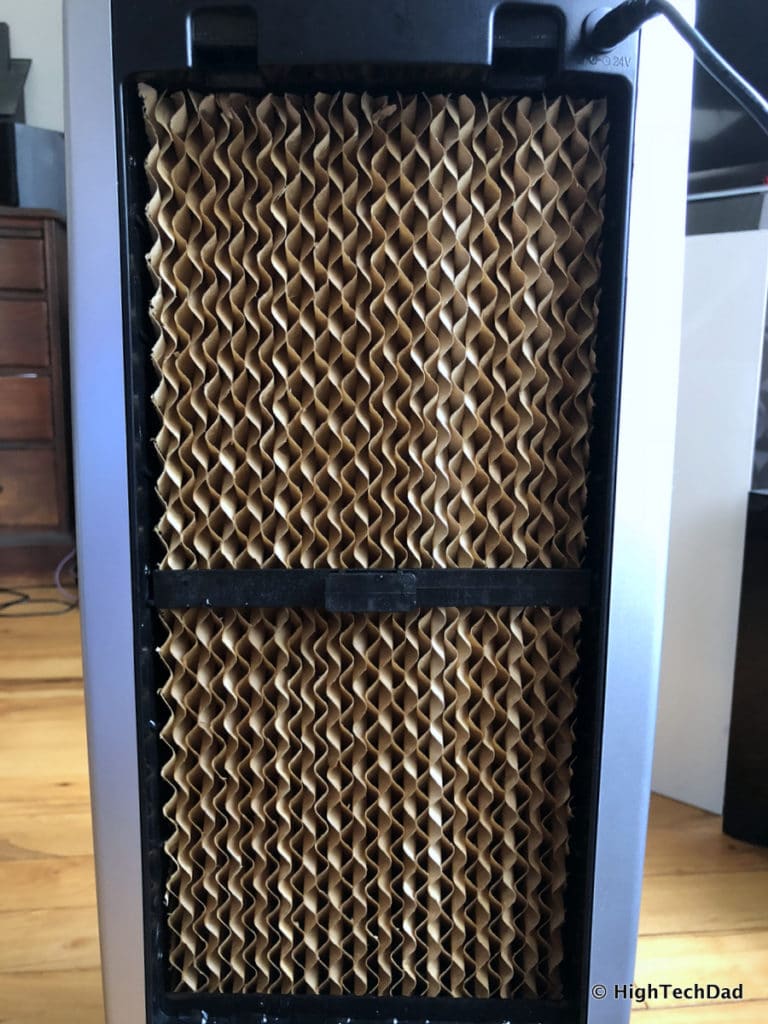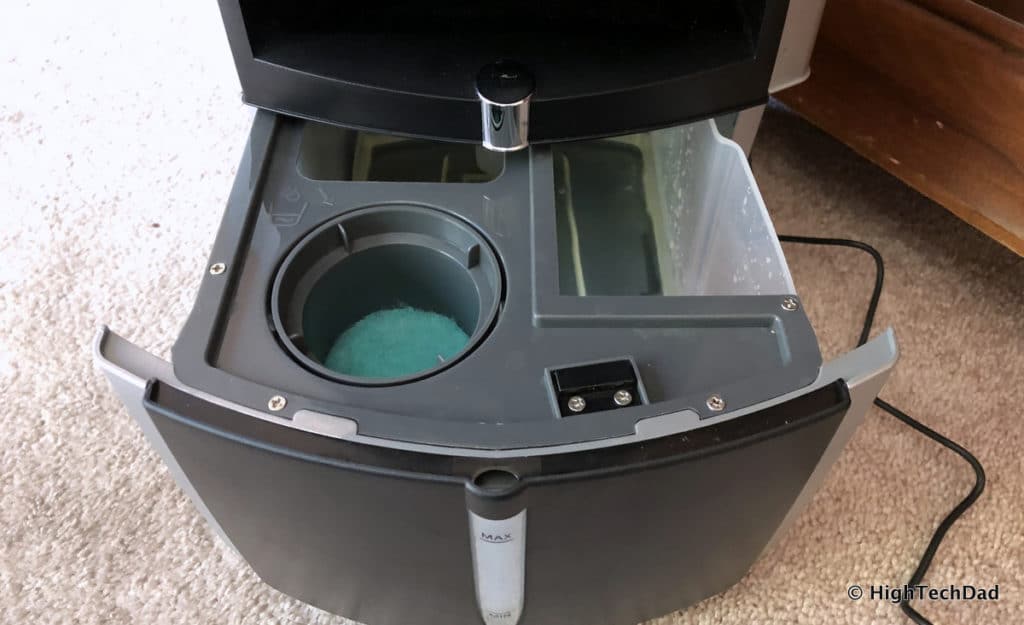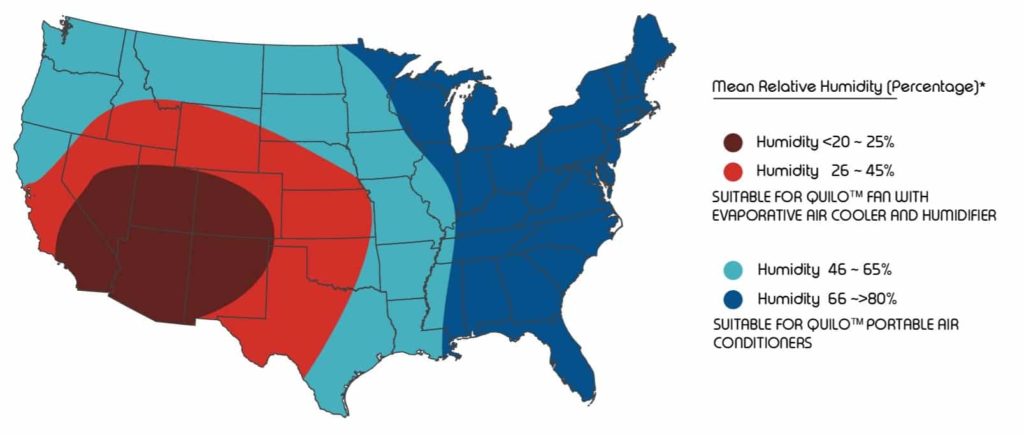The summer heat is upon us. And our natural reaction is to reach for the A/C switch and crank up the cool air. The problem is, many times people tend to congregate in only a couple of rooms in the house and most air conditioners are designed to cool down the whole house, regardless of whether you are in a room or not. Of course, you could get a single room air conditioner, portable or wall mounted, but these devices aren’t exactly energy efficient. While they do work to cool down a room, they do consume considerably more power than a fan. There is a nice alternative though. And one that actually had three options built into a single device. The Quilo 3-in-1 Tower Fan also has a built-in evaporative air cooler as well as a humidifier. So why would you want a device like this? I’ll tell you! (*Disclosure below.)
Obviously, there is a time and a place for cranking up the air conditioning. But, if you are looking to cool down a bit and want something that does it a bit better than just a plain old fan, you may want to look at the Quilo 3-in-1. I would like to walk through the three types of tech at work here. And each of these really isn’t “new” or “revolutionary” in any way. The technology, or rather, science, has been around for a long time. But combining them all in this unique fashion is where the technology comes in to play.
The first “tech” is essentially a fan. Fans are not new. Even think back to the ancient Egyptians being fanned by palm fronds. Moving air across your skin can produce a cooling effect (more on that shortly). Of course, back then as well it took energy (in a human form) to create the fan movement. Fast forward to where we now have electricity, and electric fans now move air automatically. But yes, these take energy as well. Air conditioning is essentially a massive fan that blows cooled air around. The energy is consumed mainly in the cooling process. The Quilo has a built-in fan that moves air around.
When your body gets hot, it will sweat. It is the process of the body sending water to the surface of the skin and then that water evaporating that causes a cooling sensation. As water evaporates, it cools. This is the second technology that makes the Quilo a cooling device. The Quilo is an evaporative cooler. You may have heard the term “swamp cooler” before – it’s a more casual term for an evaporative cooler. According to Wikipedia, “evaporative cooling works by exploiting water’s large enthalpy of vaporization. The temperature of dry air can be dropped significantly through the phase transition of liquid water to water vapor (evaporation).” The Quilo Tower Fan uses this evaporative process to create a localized cooling effect.
Lastly, through this process of evaporation, water is introduced into the air. In dry climates, this can be beneficial as dry air can irritate your nose and mouth and can make conditions like asthma and allergies worse. (Conversely, too much humidity can make mold or mildew grow more. The optimal range, according to the EPA, is between 30 and 50 percent. The Quilo then also acts as a humidifier. Humidifiers are good all year round. During the winter season, in some areas, the use of heating can dry out the air significantly. Adding humidity back into the air helps prevent issues like dried nasal cavities and even nosebleeds.
Quilo 3-in-1 Tower Fan, Humidifier & Evaporative Cooler Review
The Quilo has uniquely positioned itself to combine these three technologies and sciences of air movement, evaporation and humidification into one portable device. And the Quilo has a lot of ways that you can use this tech to cool and/or humidify your house. Let’s take a look at the Quilo and how it works.
For starters, the device is portable. There are two big wheels and two small wheels on the base which allow you to easily move it around from room to room. (A quick word of advice, if you are going to be moving the Quilo around, be sure that the water reservoir is empty or at least low so you don’t splash water around on the floor.)
The Quilo measures 9.84” wide by 12.44” deep by 28.86” high and weighs just 11.68 pounds. The water reservoir (more about that shortly) holds 1.85 gallons of water. Energy consumption ranges between a mere 7.4W when in Sleep Mode to only 36W in Turbo Mode. In comparison, a small wall air conditioner can consume 500W – that’s quite a difference.
On the top of the Quilo, there is a flap that opens up to an area where you can put ice for additional cooling. As the Quilo runs, water is pumped up from the bottom water reservoir and to the top of the Quilo where it then flows down through a honeycomb filter. Before it flows to the filter, you can optionally put ice into the ice compartment so that the water flowing down is extra cold. As it flows through the honeycomb filter, it is also vaporized and blown into the air via the fan, humidifying and cooling the air.
At the top front of the Quilo are the main control panel and indicator readout. Note: you can also control the Quilo with the included remote control. From right to left on the control panel, you have the following buttons: On/Off Power, Cool, Fan Speed, Timer, Swing (Oscillation), and Turbo/Quiet Mode.
The display also shows a warning if the water is low. And note, the Quilo will also beep when the water is empty so be sure you fill it up before you go to bed. I found that even full, on Turbo mode, you will use up the water while you sleep so be ready to be potentially woken up when the water runs out. I would recommend not using Turbo mode for longer durations.
When you use Cool mode, you need to be sure you have the water tank filled up at least above the minimum level mark. You can then press the Cool button, and the water pump will begin pumping the water up and over the honeycomb. Note: if you turn off the cool button, the Quilo will just operate as a fan only.
Quiet and Turbo modes operate the way you would expect. Quiet is essentially low power consumption and wind speed (and is obviously quiet) while Turbo cranks up the fan (and has higher energy consumption – remember, it’s pretty low at only 36W on Turbo mode). The Swing button turns on the vents inside to oscillate the fan.
On the sides of the Quilo are two handles that help with the moving and positioning of the device.
In the center is the main area that contains the vents which can oscillate as well as what Quilo calls the honeycomb cooling media. The Quilo comes with a Carbon Dust Filter and the Honeycomb Cooling Media. One nice thing is that you can easily remove and clean these two items yourself. You don’t need to always purchase a new filter (unless you have found it to be dirty.) Under normal conditions, you can rinse the filter with clean water, let it dry, and put it back in.
At the bottom of the Quilo is the water tank. The tank holds almost 2 gallons of water. You can slide the tank out and fill it in a sink if you want to, however, I found that when I was carrying a full tank of water, I tended to spill water all over as the “full” fill line is almost at the top of the removable tank. It’s a bit easier to get a large measuring cup and just slide the tank out like a drawer and pour the water in. On some versions, there is a little round water filter you can put in and pour the water through to prevent particles and dust from entering the water. If you use clean tap water, you shouldn’t have to worry about it.
As I mentioned, there is an alarm when the Quilo runs out of water. Also, it will auto shut off if the water tank is detached or not slid in correctly.
So how well does the Quilo work? Well, you have to put everything into perspective first. For starters, it is NOT an air conditioner. Consequently, it cannot cool an entire house or even a large room significantly. But along the same line, it also does NOT use up the same amount of energy an air conditioner does. It uses a considerable amount LESS energy than air conditioners which is a big bonus.
It’s better to think of the Quilo as a personal cooler fan. It’s much better than a traditional fan as it is truly cooling air via evaporation and not just moving it around. And, it is also humidifying the air which has good skin and breathing benefits. For me, in Northern California, the Quilo seems to work pretty well. I have measured our indoor humidity, and it seems to range between 45 and 60% (closer to the 60%). If you have more than 60% humidity, the evaporative cooling might not be very effective, and Quilo actually recommends getting a portable air conditioner instead. However, if you live in more of a dry air environment with low humidity, the Quilo is a good choice. Living in Northern California (specifically the Bay Area), I’m on the edge of the effective zone (see the map below).
However, I did find that when it was hot in our house (over 80 degrees), sitting directly in front of the Quilo as it blew the ice-cooled and humidified air at and around me, I did notice a cooling. Also, I have some in-room thermometers which did indicate that after an hour of the Quilo running (on Turbo), the room’s temperature did drop a few degrees. Stepping into the room, you could distinctly feel the difference in temperature as well as a slight change in humidity. It was quite comfortable actually and seemed to be effective.
So, for immediate cooling, I would recommend sitting directly in front of the Quilo. And, over time it did drop the temperature of a fairly large room a few degrees. Much better in terms of energy efficiency than using a whole-home A/C!
The Quilo 3-in-1 Evaporative Air Cooler and Fan retails for $159 which is extremely reasonable when you consider the price of many tower fans that DON’T have the evaporative technology built in. The Quilo is currently available on Amazon for $159 as well.
Overall, I like having the option to have an energy-efficient personal air cooler and humidifier available to me to move around from room to room. I’m always setting the temperature higher on my A/C (as the rest of my family sets it lower), and now, with the Quilo, I have the option to use a room cooler that uses much less energy instead of the whole-home air conditioner.
Disclosure: I have a material connection because I received a sample of a product for consideration in preparing to review the product and write this content. I was/am not expected to return this item after my review period. All opinions within this article are my own and are typically not subject to editorial review from any 3rd party. Also, some of the links in the post above may be “affiliate” or “advertising” links. These may be automatically created or placed by me manually. This means if you click on the link and purchase the item (sometimes but not necessarily the product or service being reviewed), I will receive a small affiliate or advertising commission. More information can be found on my About page.
HTD says: Instead of turning on the entire home air conditioner to cool just one room, try using the Quilo Evaporative Air Cooler and Fan which both reduces the temperature and humidifies the air for breathing and skin benefits. The Quilo is especially effective in areas of low humidity and saves you $$$ over expensive A/C units.
HighTechDad Ratings
-
Ease-of-Use
-
Family-Friendly
-
Price Point
-
Features
Summary
Instead of turning on the entire home air conditioner to cool just one room, try using the Quilo Evaporative Air Cooler and Fan which both reduces the temperature and humidifies the air for breathing and skin benefits. The Quilo is especially effective in areas of low humidity and saves you $$$ over expensive A/C units. The Quilo is extremely easy to set up – just add water, plug it in, and turn it on. It does a relatively good job as a personal cooling device, especially if you have it pointed directly at you. Adding ice to the reservoir definitely helps the cooling process. If you live in a low humidity region, the Quilo is a great device to have to cool individual rooms and it is portable too. And you can’t beat the price point compared to an air conditioner and the energy consumption of the Quilo is low in comparison as well.
